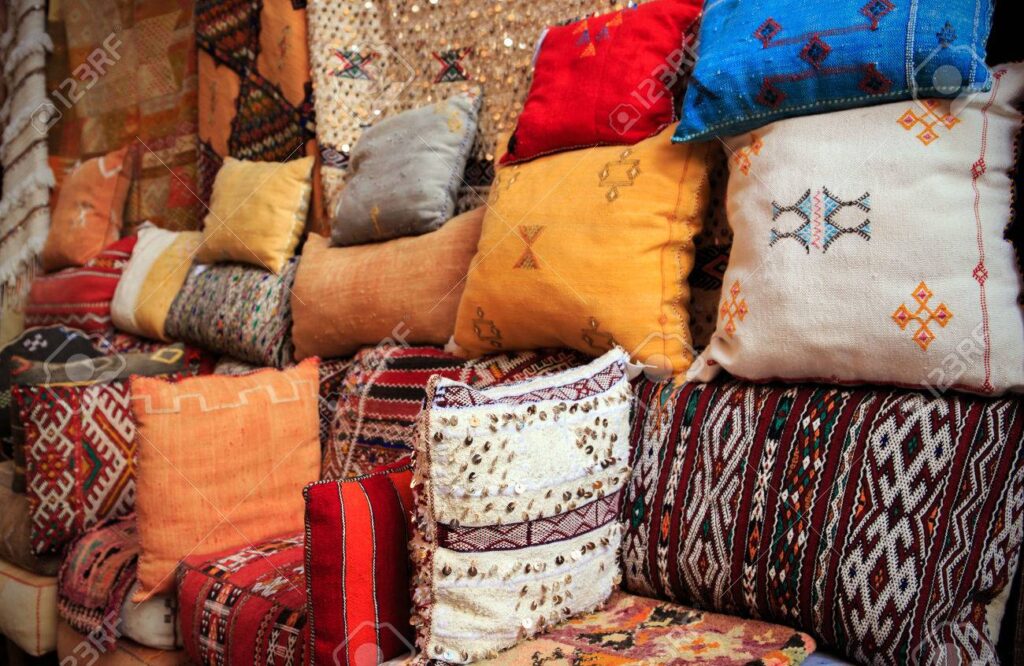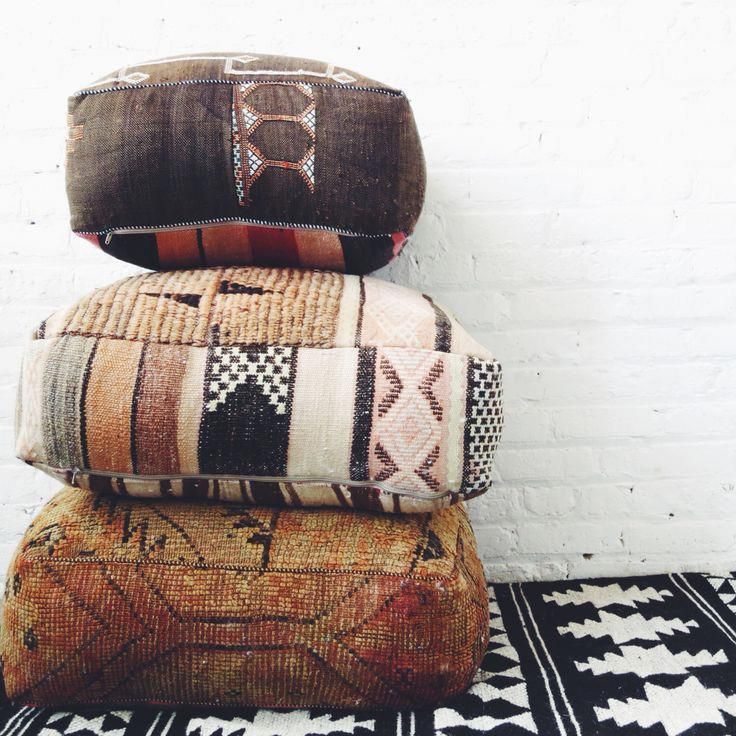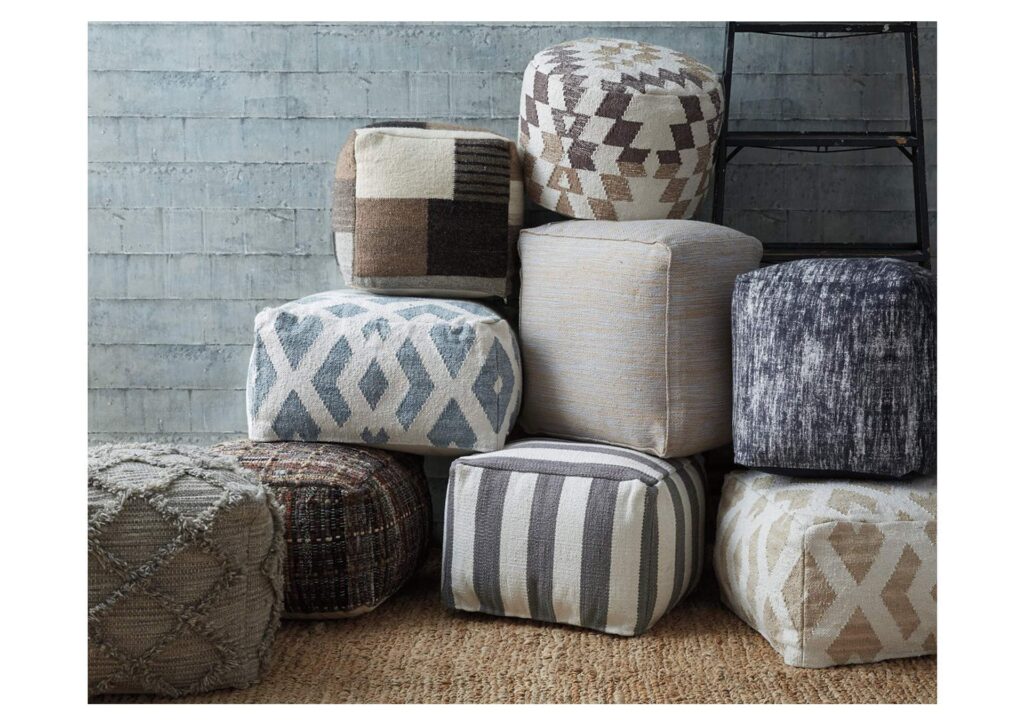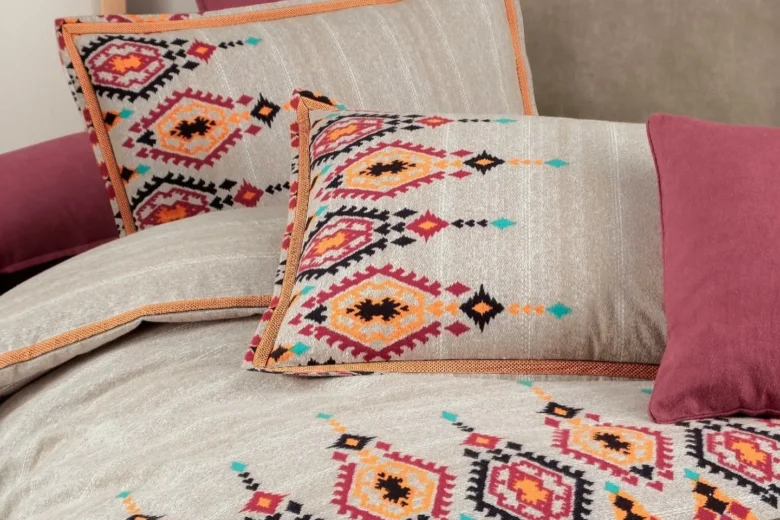Moroccan pillows bring authentic cultural artistry into modern homes, instantly elevating living spaces with warmth and sophistication. Here are a few tips on incorporating these versatile textiles into any design scheme.
Authentic Moroccan pillows are handwoven from flat-woven textiles, often featuring geometric designs with significant symbolic meaning for the Berber tribes that crafted them.

Origins
Moroccan pillows have been around for centuries, their history rooted in the rich cultural traditions and craftsmanship of North African Berber tribes. Utilizing ancient weaving and dying skills, artisans create decorative pieces that tell a tale through patterns and symbols. Now, these pillows have gained wide recognition as versatile additions to modern interior design projects worldwide, with their cultural significance and exquisite craftsmanship making them popular choices among homeowners and designers looking for ways to add Moroccan style into their space.
Moroccan floor pillows make a stylish and versatile addition to any space, from bohemian living rooms to minimalist bedroom designs. Their timeless aesthetic and comfortable structure make them a fantastic way to bring traditional and modern aesthetics together in one space.
By purchasing a Moroccan pillow, you’re supporting the artisans who handcraft these exquisite textiles with such skill and passion, preserving century-old traditions while at the same time providing income to their families while contributing to keeping culture and history.
Styles

Moroccan pillows offer an endless array of designs, colors, and textures to make a room complete. Boasting geometric or abstract motifs evoking Moroccan culture and heritage, they serve as beautiful accent pieces in any setting. In this section, we examine current trends in Moroccan pillow design, how these textiles have been represented artistically or otherwise, and their cultural significance as enduringly popular pieces.
This buyer’s guide offers practical tips for selecting and incorporating Moroccan pillows into contemporary decor. Additionally, it outlines their unique materials and construction that symbolize Berber tradition and cultural artistry.
Moroccan pillows are handcrafted from natural materials like wool and cotton, as well as the more luxurious silk. Each one embodies Morocco’s rich history through patterns and motifs depicting Berber symbols and traditions, yet modern designers have adopted these pillows due to their exotic elegance and comfort. This section provides tips on incorporating these versatile accents into contemporary homes, along with how best to match them with other global textiles.
Materials

Moroccan pillows combine traditional craftsmanship with contemporary flair to make an impressive statement in modern decor. Their stunning beauty and cultural significance appeal to people worldwide and help homeowners incorporate diverse cultural influences into their interior design schemes.
Making a Moroccan pillow begins with shearing sheep and washing their wool, an age-old tradition that ensures its purity. From there, artisans hand-weave this fabric using centuries-old weaving looms and techniques passed down from generation to generation.
After this step, yarn is dyed using natural pigments known for their durability and long-term color retention. Creative expression meets tradition when selecting patterns and colors; each motif often carries special significance or represents an ethnic group or region.
Finally, the woven cloth is sewn into pillow shapes and filled with soft materials for optimal comfort. When added to any cozy corner in a room, Moroccan-style pillows create a comfortable seating option that instantly transforms its atmosphere. This decorative element also makes an excellent complement to other decor pieces in bedrooms and living rooms.
Uses
Moroccan pillows are unique accent pieces that inject authentic cultural artistry into contemporary design. Evoking an exotic global vibe, these pillows also bring history alive through intricate patterns and symbols from Moroccan culture.
Artisans use various materials to hand-weave Moroccan pillows. Artisans utilize time-honored techniques that enhance the natural colors derived from sheep fur to further amplify them, which provides a range of color options that suit different design styles and personal tastes. Moroccan pillows add character and flair to any bohemian or farmhouse setting!
Moroccan motifs often draw their inspiration from an artisan’s heritage, spiritual beliefs, and tribal affiliations – making them ideal ways to add a personal touch to any space.
Moroccan throw pillows offer more than decorative value – they also help support artisans in Morocco, helping their families maintain traditional craft skills and weave for generations. Regular, gentle vacuuming and spot cleaning with mild soap and water should ensure maximum beauty and longevity of these unique textiles.
Care

Moroccan pillows capture the cultural heritage of Berber tribes with their intricate patterns and vibrant hues, reflecting their rich culture and skill as artisans. Each pillow tells a unique tale while adding comfort, cultural elegance, and cultural history into any living space, transforming any space into an exotic haven.
Moroccan pillows bring exotic flair into any space and pair beautifully with other decorative pillow styles for a layered effect. Use them as focal points on sofas and armchairs, or layer them on floors for cozy corners – they even make lovely accent pieces in beds and bedrooms!
Moroccan pillows require proper maintenance in order to preserve their beauty and prolong their longevity, as this section outlines effective techniques for cleaning and protecting these unique accent pieces against environmental elements.
By JobHijra

